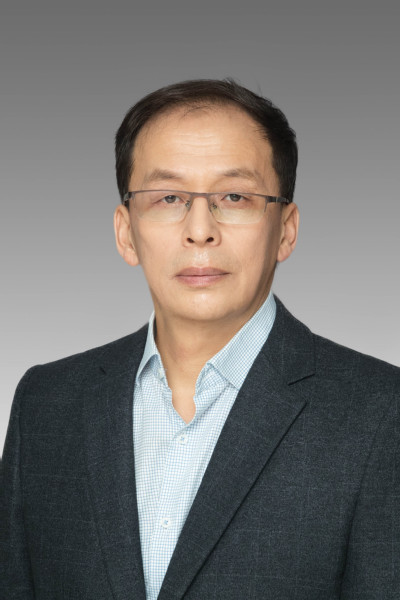New energy materials and secondary batteries (Li-Ion battery, Li-S battery, and Solar rechargeable battery).
Education:
1992.09-1995.06:PhD Degree in Department of Chemistry, Nankai University, China
198709-1990.06: MS Degree in Department of Chemistry, Nankai University, China
1983.09-1987.06:BS Degree in Department of Chemistry, Nankai University, China
Research Experience:
1999.03 - Present: Professorin Institute of New Energy Material Chemistry, Nankai University, China.
2004.09-2004.10: Visiting Scholar in ElectronMicroscope Unit and School of Chemistry, The Universityof Sydney, Australia.
2001.06-2001.09: Visiting Scholar in Department ofChemical Engineering, The Universityof Queensland, Australia.
1997.05-1999.03: VisitingResearcher in Department of Environmental andChemical Engineering,Kogakuin University, Japan.
1995.07-1997.04: AssociateProfessor in Institute of New Energy Material Chemistry, Nankai University, China.
1990.07-1992.08: Lecturer inInstitute of New Energy Material Chemistry, Nankai University, China.
A brief description ofachievements in the research field
Prof. Gao is an expert on newenergy storage materials and secondary batteries. In the past ten years, he haspublished more than 100 papers with over 10000 cited times in Web of Science. His personal h-index is 579 Hereceived National Science and Technology Progress Award in 2005 (the 2nd Grade,R6) and Tianjin Natural ScienceAward in 2003 and 2015 (the 2nd Grade, R1). In recent years, his researchfocuses on new electrode materials for Li-Ion battery, Li-S battery, and solarrechargeable battery.
Tencareer-best publications with high Impact Factors:
1) G. C.Li, G. R. Li, S. H. Ye, X. P. Gao*, A Polyaniline-CoatedSulfur/Carbon Composite with an Enhanced High-Rate Capability as a CathodeMaterial for Lithium/Sulfur Batteries, Adv. Energy Mater., 2 (10) (2012)1238-1245. (IF=15.230)
2) S. Liu,J. J. Hu, N. F. Yan, G. L. Pan, G. R. Li, X.P. Gao*, Aluminum storage behavior of anatase TiO2 nanotubearrays in aqueous solution for aluminum ion batteries, Energy Environ. Sci., 5 (12) (2012) 9743-9746. (IF=25.427)
3) G. R.Li, J. Song, G. L. Pan, X. P. Gao*, Highly Pt-like electrocatalytic activity oftransition metal nitrides for dye-sensitized solar cells, Energy Environ.Sci., 4 (5) (2011) 1680-1683. (IF=25.427)
4) G. R. Li,F. Wang, Q. W. Jiang, X. P. Gao*,P. W. Shen, Carbon Nanotubes with Titanium Nitride as a Low-CostCounter-Electrode Material for Dye-Sensitized Solar Cells, Angew. Chem. Int. Ed., 49 (21) (2010) 3653 –3656. (IF=11.709)
5) J. Qu,G. R. Li, X. P. Gao*, One-dimensional hierarchical titania forfast reaction kinetics of photoanode materials of dye-sensitized solar cells, EnergyEnviron. Sci., 3 (12) (2010) 2003-2009. (IF=25.427)
6) S. Liu, G. L. Pan, N. F. Yan, X. P. Gao*,Aqueous TiO2/Ni(OH)2 rechargeable battery with a high voltagebased onproton and lithium insertion/extraction reactions, Energy Environ. Sci.,3 (11) (2010) 1732-1735. (IF=25.427)
7) B.Zhang, X. Qin, G. R. Li, X. P. Gao*,Enhancement of long stability of sulfur cathode by encapsulating sulfur into microporesof carbon spheres, Energy Environ. Sci., 3 (10) (2010) 1531 - 1537. (IF=25.427)
8) X.P. Gao*, H. X. Yang*, Multi-electron reaction materials for high energydensity batteries, Energy Environ. Sci. 3 (2) (2010) 174-189. (IF=25.427)
9) X.P. Gao*, S. M. Yao, T. Y. Yan, Z. Zhou, Alkaline rechargeable Ni/Co batteries:Cobalt hydroxides as negative electrode materials, Energy Environ. Sci. 2 (5) (2009) 502-505. (IF=25.427)
10)H. Y. Zhu*, Y. Lan, X. P. Gao*, S. P. Ringer, Z. F. Zheng, D. Y. Song, J. C.Zhao, Phase Transition between Nanostructures of Titanate and Titanium Dioxidesvia Simple Wet-Chemical Reactions, J. Am.Chem. Soc., 127(18) (2005) 6730-6736. (IF=13.038)

